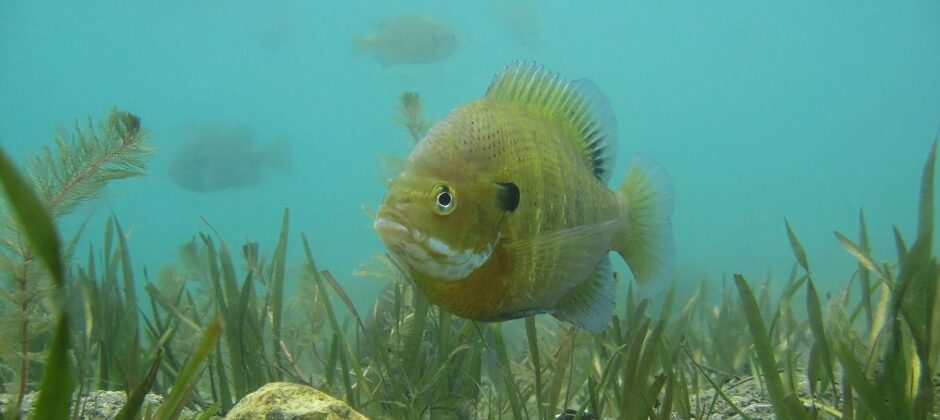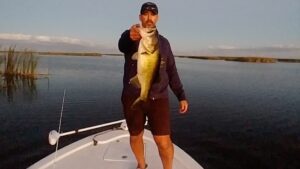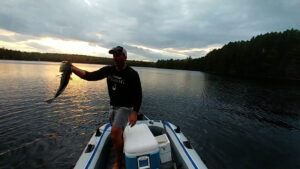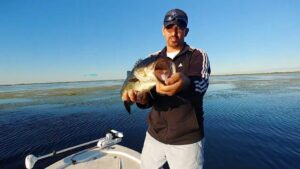Welcome to our Sunfish Fishing Home Page
For this section, we will be covering the sunfish that are considered true sunfish. These are true sunfish. The most popular sunfish of this genus include bluegill, pumpkinseed, redear, bedbreast, warmouth, green sunfish and longear sunfish. Sunfish are often called bream in the south. We will also cover rock bass in this section.
Quick Links
| Baits, Rigs & Techniques | Tackle Recommendations |
| Best Fishing Rigs | Fishing Line Recommendations |
| Best Fishing Techniques | Fishing Rod & Reel Recommendations |
| Best Baits | |
| Time of Day & Throughout the Seasons | |
| Catch More & Bigger Fish | |
| Seasons (Spring thru Winter) | |
| Catch Big Sunfish | Time of Day |
| Catch Lots of Sunfish | |
| Water & Weather | |
| Kitchen Table | Cover & Structure |
| Types of Water | |
| Eating Sunfish | Water Depths |
| Weather | |
Habitat
Sunfish are found in a variety of waters such as ponds, lakes, reservoirs and streams. You will see them thrive in clear water and murky water too. They are found around all types of cover such as weeds, wood and rocks.
Fishing Rigs
You can keep it real simple when it comes to sunfish, however, there are several rigs that can definitely help you put more quality fish in the boat. Take a look at our fishing rigs for sunfish section to learn more.
Live & Natural Baits
Sunfish will eat a variety of bites such as soft plastics, hair jigs, flies and then real baits such as worms, crickets, grasshoppers and much more. Take a look at our live & natural baits for sunfish section to learn more about what to use and how to use it to catch more .
Rod & Reel Recommendations
We recommend keeping it simple and using light action rods and reels for sunfish. Learn more on our rod & reel recommendations for sunfish page.
Fishing Line Recommendations
Most anglers will use 4 to 6 pound line when targeting sunfish. If you are fishing heavy cover, you may want to go heavier. Learn more on our fishing line recommendations for sunfish page.
Eating Sunfish
Sunfish taste very good. For many people, bluegill and other types of sunfish are near the top of their list for best tasting fish. Most people that enjoy eating them will use batter and then fry them in oil.
Bluegill

Bluegill (and other types of bream) are the most widespread and common type of sunfish. They can be found throughout the United States and these are the fish that most young anglers will target when they are learning how to fish.
Bluegill feed on insects, crustaceans, nightcrawlers, red worms, spikes, wax worms, bread and small minnows.
Green Sunfish

Green Sunfish have a larger mouth and body than other sunfish. If they grew to bigger sizes, their body would be similar to a bass. They can handle very harsh conditions such as murky water and low oxygen levels. They are found in ponds, lakes, rivers and streams. You can locate green sunfish around rocks, weeds, brush and timber. Because of their large mouths, they can eat bigger baits. Green sunfish will feed on insects, crayfish, small minnows and other small bait fish.
Everything we cover in our sunfish section as far as catching sunfish will work with the green sunfish. Due to their small size, you won’t find too many that will be big enough to eat.
Longear Sunfish

Longear Sunfish are small but very colorful. They are small, averaging 4 to 5 inches in length with very few fish reaching 1 pound. Longear Sunfish are mostly found in slack water of clear streams, but you can also find them in lakes, ponds, reservoirs, and estuaries. The longear sunfish has a black ear flap with some red and yellow also. They will feed on small insects and other tiny foods because of their small size.
Pumpkinseed

Pumpkinseed will amaze you with their beautiful colors. They do not grow as big as bluegill, but they are nice to look at and they are very aggressive. They prefer slack water in ponds, lakes and some streams. They feed on insects, worms and tiny bait fish. Everything we cover in our sunfish section as far as catching sunfish will work with pumpkinseed. You will often catch some pumpkinseed mixed in with other sunfish, but at times, you may find an entire school of pumpkinseed. They taste great too.
Redbreast Sunfish

Redbreast Sunfish can adapt to most types of water. They can live in clear streams, lakes with muddy bottoms and even in estuaries. They are very small with the average adult only 6 inches long. Redbreast prefer slack water and they feed primarily on the bottom.
Everything we cover in our sunfish section as far as catching sunfish will work with the redbreast sunfish. Because of their lack of size, most anglers will not eat them, but they do taste good if you can catch a big enough fish to eat.
Redear Sunfish

Redear sunfish are commonly called shellcracker in the south. They are bigger than other sunfish, averaging 7 to 10 inches in length with many fish in the 1 to 2 pound range in the south. They have a distinct red coloring around its ear flap. Redears feed on snails, insects, and small bait fish. They have a special set teeth in their throat that allows them to grind up snail shells. Redear can be harder to find because they prefer deeper water than other sunfish.
Everything we cover in our sunfish section as far as catching sunfish will work with redear sunfish. Because these fish grow bigger, they can handle baits a little bigger than you are used to when fishing for sunfish. You don’t want to go too big though because their mouths aren’t that big. Redear sunfish do taste excellent.
Rock Bass

Rock Bass are one of the most aggressive panfish. They will strike a variety of baits and lures, which is great for anglers who like to catch them. For some anglers, they are quite annoying though because they will go through your nightcrawlers or leeches in a hurry.
Like most sunfish, rock bass rarely exceed 2 pounds, however, rock bass as big as 3 pounds have been caught. Most rock bass that anglers catch will usually be in the 6 to 9 inch range. Because rock bass can grow quite large compared to other sunfish and they have larger mouths, there are some baits that will work great for catching them that may not work as well on the other sunfish.
Warmouth
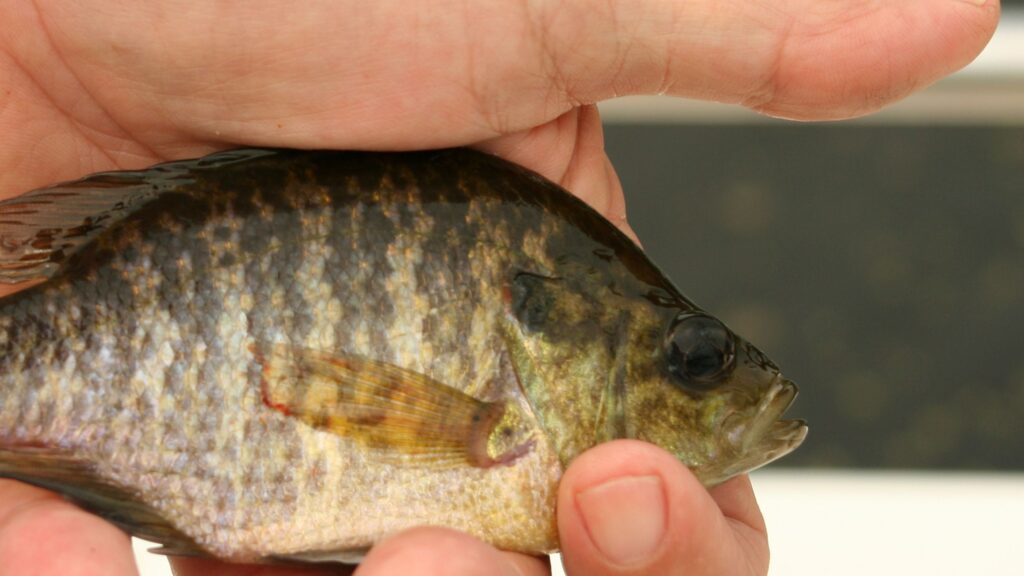
Warmouth can live in warmer, shallower areas than most other sunfish. These fish are mostly populated in the southeastern part of the U.S. They are not as common as other sunfish because of their low reproductive rates. Because of its coloring, many anglers confuse warmouth with rock bass. Warmouth will average 7 to 8 inches, although 10 to 11 inch fish are not uncommon. A two pound fish would be close to the world record. They feed on insects, crayfish and tiny bait fish.
Everything we cover in our sunfish section as far as catching sunfish will work with the warmouth. These fish do have a decent-sized mouth which allows them to each some bigger baits than some sunfish would, so don’t be shocked if you catch one of these fish while using a tube or small bass jig.
